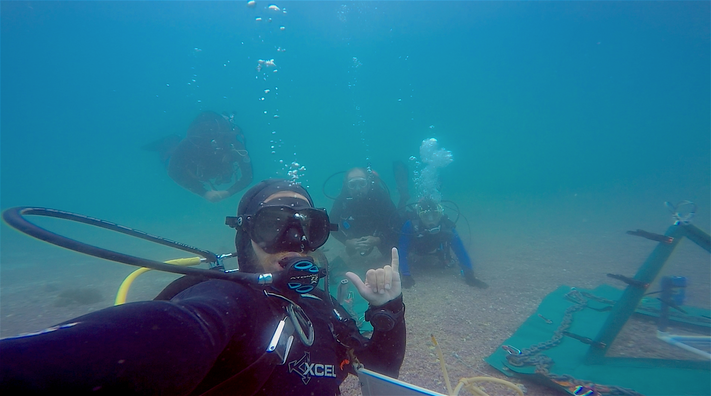 One of the disturbances in the mooring field is the blocked sunlight from the boats themselves One of the disturbances in the mooring field is the blocked sunlight from the boats themselves July 18th 2018 Wrigley Institute for Environmental Studies We’re just now wrapping up our first of four expeditions to Catalina Island’s rhodolith beds, and boy do we have a lot of data to process! In total, we’ve sampled five beds for fish, invertebrates, benthic cover (including cores) and set up 30 CBITs! We’ve talked about what we’re doing out here, and how it’s done, but the story won’t be complete until the data are analyzed. As ecologists, we try to balance field work with “office” work. While we’re often daunted by the enormity of trying to sample an entire ecosystem, the magic really happens when we analyze our data. But more on that later! Clearly, we’ve spent a lot of time underwater on this trip, maximizing our sampling effort and taking advantage of the incredible conditions. At first glance, the rhodolith beds look pretty plain and simple. But as we’ve shown, they’re a lot more dynamic than they appear. If you spend enough time in the ocean you’ll see some amazing organisms, and the rhodolith beds are no exception. From competitive macroalgae to charismatic vertebrates, check out some of the best biota the beds have to offer!
0 Comments
Leave a Reply. |
AuthorPike Spector is currently a Research Operations Specialist with Channel Islands National Marine Sanctuary Archives
August 2022
Categories |










 RSS Feed
RSS Feed
